What life looks like after the lockdown
Countries that have eased the lockdown give us a glimpse of the new normal, once the restrictions are rolled back


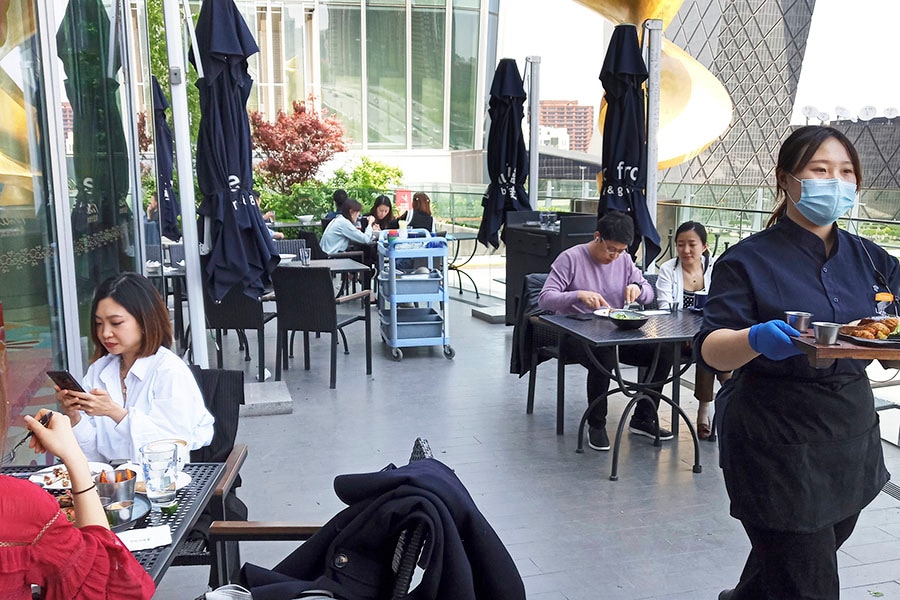 Seen here is a restaurant in Beijing. The capital of China started inching back to normalcy in mid-April, with its restaurants and malls reopening
Seen here is a restaurant in Beijing. The capital of China started inching back to normalcy in mid-April, with its restaurants and malls reopening
Image: Abhishek G Bhaya[br]Zhang, a freelance interior designer from Beijing, was in her hometown of Heze to celebrate Chinese New Year when the city of Wuhan, the first epicentre of the novel coronavirus outbreak, was put under a watertight lockdown to combat the pandemic that would later affect over 30 lakh people across continents. As the government amped up controls on the rest of the country and clamped down on travel, Zhang’s return to Beijing was delayed. When she did manage to take the train back on March 19, she had to upload every minute detail of her whereabouts on an app before boarding and take hourly temperature checks through her nearly-four-hour journey. Once in Beijing, Zhang went into immediate self-isolation. “I didn"t even go down to the garden of my building compound to collect my delivery orders,” she says.
In mid-April, Beijing was inching back to normalcy—its parks had opened, so had malls and restaurants, and traffic on its ring roads, a barometer of the city’s frenzied pace, had picked up to two-thirds of normal. Zhang, too, had gone out to socialise with her friends for the first time in two-and-a-half months. But the battle scars of a public health crisis remained—and not just in the masks they were mandated to wear every time they had to step out.
In the new world order following the pandemic, Zhang and her friends couldn’t just walk into a restaurant and grab a table—they first had to book one through an app to eliminate crowding on the spot. Most restaurants that had reopened had reduced the number of tables and set them six feet apart enclosed, air conditioned spaces were out and seating was arranged open-air or on the rooftop. And every time anyone had to enter a public place, or even leave or return to their own apartment compounds, their temperature was taken. Thermal scanners were as ubiquitous as face masks and a green health code on the smartphone, tracked through an app, the new masterkey.
Despite the app triggering debates over heightened state surveillance by tracking citizens, it’s this code—akin to a health certificate—that allows Husain Barma, the head of chemistry department at Shanghai Qibao Dwight High School, into his gym every day. Barma has to pre-book his exercise slot and keep his mask on through his routine. “If you take it off because you are perspiring, they will ask you to put it back,” he says. “Besides, they’ve turned off every alternate treadmill so you can’t run on adjacent ones.”
In the DiDi cabs that Barma and his wife frequently use, or that Zhang ordered to travel the 7-km stretch between her home in Andingmen and Beijing’s entertainment district of Sanlitun, drivers hold the right to refuse a ride if the passenger isn’t wearing a mask. Seating upfront isn’t encouraged, a plastic sheet separates the front from the back, and windows are rolled down during the journey. Says Zhang, “Public transport is available, but I’d rather travel in a cab because there are more people on the bus and the metro.”
Beijing has now lowered its alert level and, starting April 30, is exempting domestic travellers from low-risk areas from the 14-day quarantine it has also opened up a few tourist spots. Zhang, too, says she is no longer scared of the highly-infectious coronavirus that affected nearly 84,000 people in her country and killed over 4,600. “I’m just respectful of the new normal,” she says.
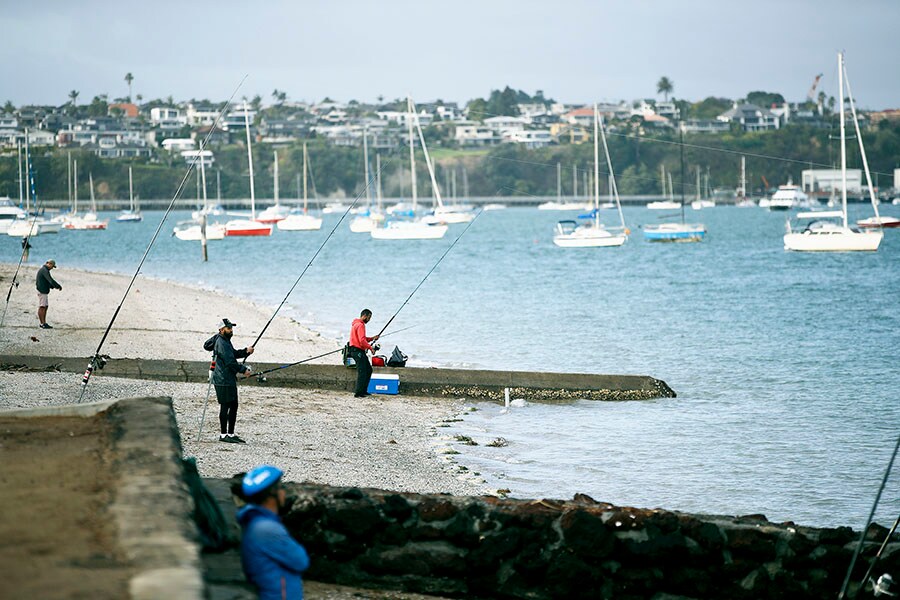 People go fishing at Bucklands Beach in Auckland, New Zealand, in April, after the government eased lockdown measures to let people widen their social bubbles
People go fishing at Bucklands Beach in Auckland, New Zealand, in April, after the government eased lockdown measures to let people widen their social bubbles
Image: Phil Walter / Getty Images
*****
New normal is a jargon that is often tossed about carelessly. But perhaps nowhere is it more appropriate than now and hereafter. India may begin a staggered rollback of its national lockdown after May 17, but glimpses of post-lockdown realities from across the world confirm that our perceptions of the normal have been upended and masks and ‘social distancing’ norms will begin to define how we go about our daily routine. While the WHO (World Health Organization) has enlisted a six-point formula to gradually exit restrictions, its immediate aftermath is expected to resemble what Judith Collins, a New Zealand MP, used to pithily summarise the downgrading of the country"s alert level to 3: “A lot like Level 4 but with KFC.”
In its early stages, the easing of lockdowns is going to be mere incremental—consider that Israelis since April 19 can venture within 500 mt of their homes for sports or prayer, instead of the earlier 100 mt big malls and bazaars across Iran, which relaxed restrictions since April 11 despite being one of the worst outbreaks in West Asia with 90,000-plus cases, are still closed areas around the driver will continue to be cordoned off on public buses in Norway’s Stavanger and their front doors sealed and New Zealand, lauded for being among the first countries to eliminate community transmission of Covid-19 through a draconian lockdown, is letting its citizens widen their social bubble from immediate to limited extended family. “I can now expand my bubble to my partner who lives elsewhere, and whom I couldn’t meet when we were in Level 4. We are also allowed to go to the local beach and order food deliveries. Beyond that, nothing much will change for me. My daughter"s school is located opposite Marist College, among Auckland’s biggest clusters with nearly 90 cases linked to it so despite going down to Level 3, it has asked them to continue online classes from home,” says Paula Ray, a researcher who lives in Auckland.
In effect, the roadmap to normalcy begins as more of a psychological impetus, the kind that gave Martin Schnabl, a physicist with the Czech Academy of Sciences at Prague, the official licence to go biking or rock-climbing without a mask. Or to Danuta Kielar, a pharmacist from Krakow, the first feel of spring. Both Kielar and her husband, a technician at a government TV station, managed to go out for a walk on a crisp sunny day once Poland, which had 12,000-odd cases, began easing regulations on April 19. “But the fewer people who were out and the masks and the gloves they wore were a constant reminder of the times we were in,” she says. 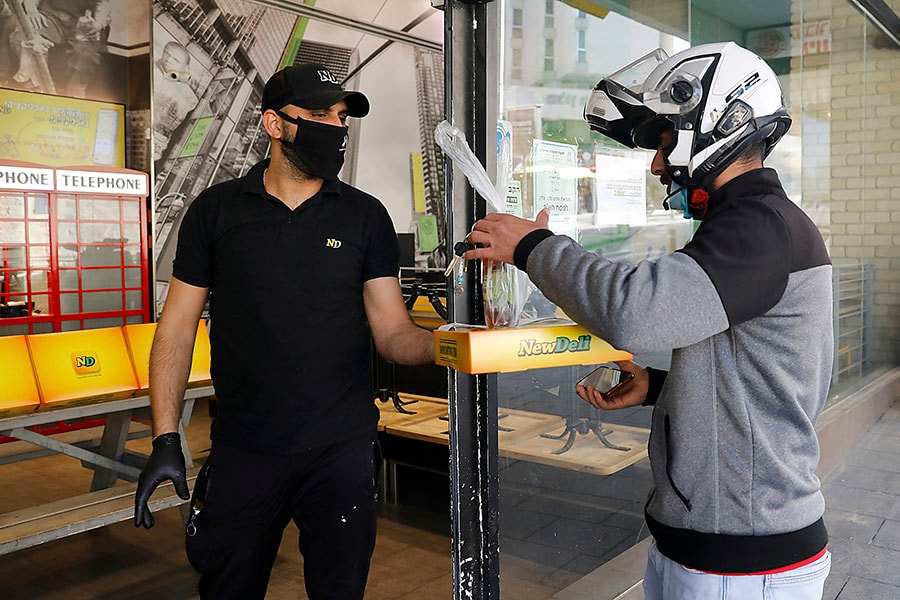 Restaurants in Israel have been allowed to open for takeaways. But despite easing restrictions, the country was put under complete lockdown and curfew on April 28-29 for Independence Day
Restaurants in Israel have been allowed to open for takeaways. But despite easing restrictions, the country was put under complete lockdown and curfew on April 28-29 for Independence Day
Images: Ahmad Gharabli / AFP Via Getty Images
The rise of vehicles has been an indication of easing of norms. Conrad Egbert, a writer and columnist based in Copenhagen, now sees a lot more bicycles zipping up and down on the road visible from his window. Three weeks ago, there were zero, he says. Ofer Aharony, who teaches at the Weizmann Institute of Science in Rehovot, about 30 km from Tel Aviv where he stays, now faces traffic en route compared to the earlier ‘green channel’. “But it’s way less than 10-15 minutes that I would get in the pre-pandemic times,” says Aharony.
When the lockdown was rescinded in Austria on April 14 and shops no bigger than 400 sq mt allowed to open, it took a while for Vienna, the capital city, to get back on its feet. In the early days, crowds were thinner than usual and only a handful of shops open at Mariahilfer Strasse, a shopping thoroughfare the buzz only picked up in early-May. Says Amitangshu Acharya, a PhD fellow at the Konrad Lorenz Institute, who lives a few minutes off Mariahilfer Strasse: “In the first week or so, barely six to seven shops, except groceries, had opened on a 500-mt stretch. But now, many are open.” 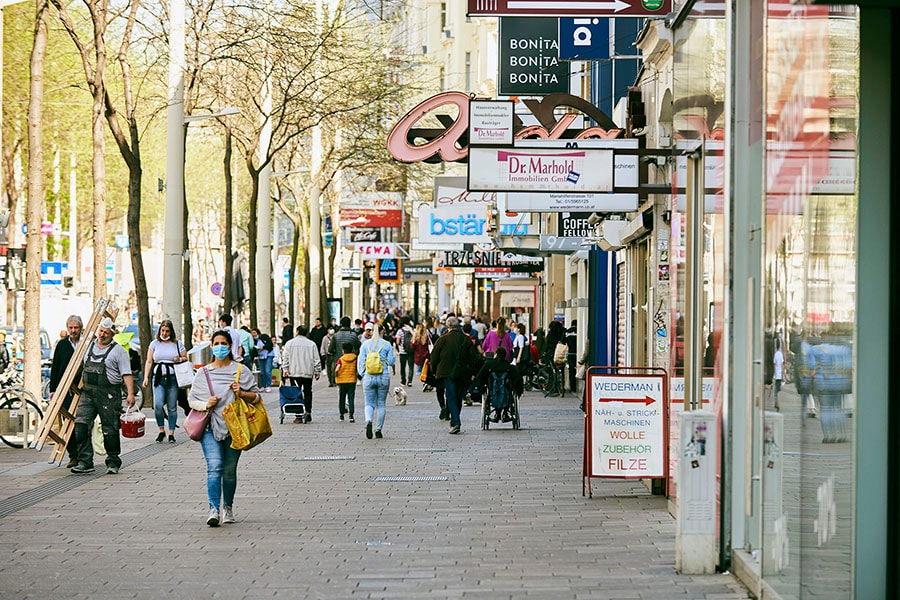 Poland, which had 12,000-odd cases of the coronavirus, began easing regulations on April 18, but people must step out wearing masks
Poland, which had 12,000-odd cases of the coronavirus, began easing regulations on April 18, but people must step out wearing masks
Image: David Visnjic / Anadolu Agency via Getty Images
Of course there have been instances of the early, unfettered rush sparked by isolation fatigue—at hobby markets across Czech Republic and at hairdressers in Denmark, “much more than to dentists even though they opened up on the same day”, says Egbert. But Shanghai has set a template for converting that physical scramble into virtual—after its farmer and flower markets drew a thr
ong soon after their reopening, it began to conduct them via WeChat groups, where pictures were posted and products delivered to the buyers seamlessly.
Whether the format would catch on in the coming days remains to be seen. But even in countries with fewer cases, governments have moved to limit gatherings that could trigger an explosion of numbers: Israel ordered a complete lockdown and curfew on April 28-29 for Independence Day, while Czech Republic, which became the first European country to ease restrictions, has resumed sporting facilities, like tennis courts and golf courses, with a cap on the number of participants—professional athletes are allowed to train in groups no more than eight and footballers can return too as long as they don’t train in direct contact. “I don’t know how they’ll do it, maybe play with only long kicks,” says Schnabl.
Besides, for most people, restaurants and eateries will be the last to evoke confidence. When they reopened in March and early-April, restaurants in Beijing were allowing only two at a table smaller cafes hadn’t still opened for dine-in customers and were letting in only one person inside at a time for takeaways. While China moves beyond the mitigation phase to containment now, some of those regulations have been relaxed in degrees while staying vigilant for a second wave. But even across lesser-hit countries like Israel and New Zealand, restaurants are allowed only deliveries, not dine-in. “Even then, I wouldn’t like to order in. I don’t know who’s cooked the food, where the packaging has come from, how the delivery is being done,” says Ray from Auckland.
Across countries that have lifted lockdowns, the number of people who can enter supermarkets or shops has been limited to conform to the norms of social distancing. Says Barma, “Even now, supermarkets in Shanghai aren’t crowded. I have hardly seen more than two-three people at the cashier and if there are more, buyers automatically go for self-checkouts. One big takeaway from the pandemic has been the heightened respect for others’ space. Everyone is accommodating everyone else.”
*****
The palpable anxiety about reopening is triggered by the highly infectious nature of the pathogen and its ability to easily transmit from one human being to another. According to latest studies published in the journal Nature, particles of the novel coronavirus can linger in the air in crowded spaces or rooms that lack ventilation. Which will call for a rethink on how individuals interact with one another in confined spaces like offices and educational institutions. 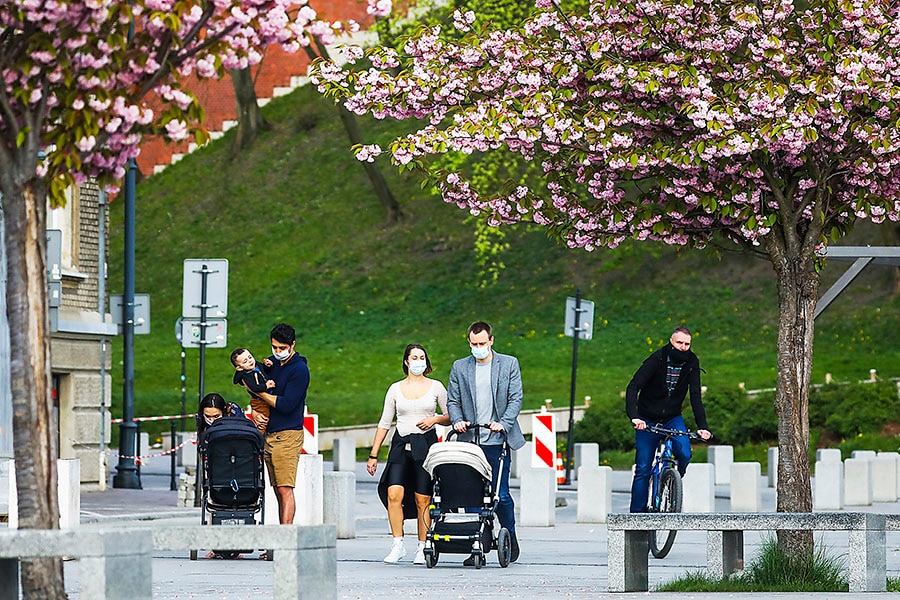 People have started venturing out in Copenhagen, Denmark, after norms were recently relaxed
People have started venturing out in Copenhagen, Denmark, after norms were recently relaxed
Image: Beata Zawrzel / NurPhoto via Getty Images
Kevin Gouldmann, a 64-year-old self-employed master piano-maker based in Beijing, is cautious about stepping out and avoids public transport when he has to. His wife, who works with Volkswagen China, worked from home for the greater part of February even when she returned, she had to report in person only thrice a week, continuing to work from home for the other two days. Now, not more than 60 percent of the workforce is allowed in the office at any given point and they are subject to multiple temperature checks. “At the canteen, their food is pre-packed to eliminate contact, and their company and a lot of other Chinese companies are encouraging employees to avoid public transport. They either send pick-ups or reimburse taxi fare,” says Gouldmann.
Says Egbert from Copenhagen, “Once we start getting back to work, we will need to relook at the open-office plan, which has been adopted by most modern offices. You’ll need shifts, lesser attendance and reorganise seating arrangements if you have to implement social distancing.”
While the Konrad Lorenz Institute near Vienna has opened from April 27, only three PhD scholars can share the space on a floor instead of the earlier six and all canteens and kitchens have been shut. At the Institute for Research in Fundamental Sciences near Tehran, only two-thirds of the staff has returned—even those commuting on public transport have been advised to work from home as much as possible.
The University of Stavanger in Norway also opened on April 27, but only for those who need equipment or the laboratories. “If you do not need to work from office, you do not need to go to the campus,” says Ipsita Mandal, an assistant professor at the university. IT services behemoth TCS has begun to kickstart the process closer home, planning to let 75 percent of its employees operate from home over time, in the post-Covid era.
For many, schools remain the final frontier. And not many countries have taken the plunge yet, merely thrashing out a timeline for a graded reopening. Even China, where most schools have resumed through April, is treading with caution. At Shanghai Qibao Dwight High School, while the Grade 12 students have had their mock final year exams online, they will return for a staggered graduation ceremony from May 20, split according to the six houses.
“Instead of a big gathering at a banquet, we’ll have about 35-40 students on each day,” says Barma. The school will start classes for Grade 11 students on May 11 and is prepping with shut air conditioners, well-ventilated classrooms, temperature check at the gate and sans morning assemblies.
Troels Harmark, a professor at the Niels Bohr Institute in Copenhagen, has a six-year-old daughter whose classes have begun since Denmark reopened nursery and primary schools on April 15. The class of 25 kids has been split into groups of 12 and 13, with the same set of students every day. Harmark isn’t allowed inside the school to pick up or drop off his daughter, only till the front yard, to help the school eliminate large gatherings of guardians.
“There are some parents who didn’t initially want to send the kids to school. But they mellowed after they saw how the schools are trying to make this work. Now, I don’t know of anyone who’s not sending their kids to school,” says Harmark.
According to a report on NBC News, Danish schools are teaching their students a new routine in a game of tag: Of touching shadows instead of each other. That may well be the playbook for many for some months to come.
First Published: May 05, 2020, 10:38
Subscribe Now